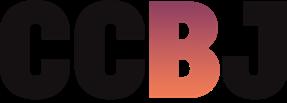OCTOBER 2024
VOLUME 32, NUMBER 7


OCTOBER 2024
VOLUME 32, NUMBER 7

AMY STEACY, GENERAL COUNSEL OF BBB NATIONAL PROGRAMS SAYS BUSINESSES DO WELL BY DOING GOOD
GC's and CLOs See Comp Drop
Confronting the Common Surge of Customer Remediations Service Before Self
World-Class Legal Operations is Key to Being a Great General Counsel


Harness the power of Artificial Intelligence with ClauseBuilder AI. Trained on almost 100 years of expertise, this free-to-use breakthrough tool utilizes generative AI language models based on a history of clauses to draft effective arbitration and mediation agreements tailored to your industry needs. With ClauseBuilder AI, the future of dispute resolution is here.



The participants in the
Network
through their many contributions, their unwavering commitment to the advancement and success of corporate law departments. The engagement and support of these “partners of corporate counsel” assure we continue to develop and distribute the
and information this unique and sophisticated audience relies on to meet the evolving legal and business needs of their organizations.

Amy Steacy, General Counsel for BBB National Programs says businesses do well by doing good.
CCBJ: What led you to join BBB National Programs?
Amy Steacy: Throughout my career, I have often thought it would be “nice”—meaningful, impactful, fulfilling—to work at a non-profit organization. I was inspired by the idea of working with a team to have a significant, positive impact for some greater good or purpose. When the general counsel opportunity at BBB National Programs arose and I learned more about the organization, I realized it was an opportunity I could not pass up.
BBB National Programs, which has its legacy in the Council of Better Business Bureaus, is the non-profit home of industry self-regulation, a form of soft law, in the United States, fostering trust, innovation and competition in the marketplace through third-party industry self-regulation, dispute resolution and other programs. BBB National Programs oversees more than 20 national industry selfregulation programs. While each program has a topical focus, all address existing and emerging industry issues and provide businesses with an accountability mechanism through which businesses are enhancing trust not only with consumers but with other businesses. Trust, at the end of the day, is the backbone of relationships—businessto-consumer, business-to-business relationships and, of course, relationships between individuals.
At its core, BBB National Programs is “where businesses turn to enhance consumer trust and consumers are heard.”

The overall mission and purpose of BBB National Programs resonated with me. It reminded me of a concept I heard from a board member of a company I had worked for previously, which is that businesses do well by doing good. What appealed to me about BBB National Programs is that it is helping businesses “do good” through the industry self-regulation and dispute resolution services it provides. Now more than ever, with the Supreme Court’s recent Loper Bright decision overruling the Chevron doctrine, under which courts had deferred to reasonable agency interpretations of ambiguous statutes, industry selfregulation is well positioned to help businesses do the right thing by proactively filling any regulatory gaps.
Please tell us about your leadership style and who or what has influenced it?
Leadership style or approach is situational and changes, at least for me it does, depending on the context and the team members or other individuals with whom I am working or engaging. That said, there are certainly core traits or, I suppose, “leadership style” elements that generally apply regardless of the situation. I am a firm believer in leading by example, putting others’ interests first, empowering team members, being oneself, the power of partnership, transparency in communication and the never-ending quest to improve in all areas.
As for “who” or “what” has influenced my leadership style or approach, it is not any one person or thing. So many people have influenced my leadership style, going back even to childhood. Throughout my legal career, I have been fortunate to have had several informal mentors. I use the word “informal” as these are attorneys or other professionals who, outside the construct of any formal mentoring program and despite the demands of their profession, have taken the time to teach, encourage and help me make connections. The mosaic of perspectives provided by those generous with their thoughts and time has had an invaluable impact on my leadership style.
Beyond the numerous human influencers, there is also a glaring “what” that has influenced my leadership style—my experience with horses. Working with, caring for, riding and, at the appropriate time, showing, horses is a part of my past and now my present again after nearly two decades away from horses. I grew up in the rural Midwest where access to horses was first possible through involvement in an organization called 4-H. My childhood experience with horses instilled the importance of discipline, planning and strategy skills, perseverance through failures (“get back on the horse” applies both literally and figuratively!), thinking
outside the box, altering course when needed and, above all else, building a relationship with the horse, central to which is a commitment to put its interests first in all situations.
Fast forward to today and I am back in the saddle once again. A few years ago, I was able to fulfill a dream and acquire my first horse as an adult. Today, my focus is on the discipline of dressage, which is sometimes likened to horse “ballet.” The learnings from horses continue to influence my leadership style. It is notable that, at the highest level of the sport, the rider-and-horse combinations have one element in common (aside from the talent of each): a harmonious partnership rooted in trust and the empathy that a rider has for the horse. Notable as well is that not a single top riderand-horse combination experiences a smooth “up and to the right” trajectory. The line is jagged with numerous dips and each dip provides growth fuel for upward spikes in the line going forward. In the horse world it is often said that “it takes a village.” You do not reach success on your own; it is a team effort and the team’s success. The parallels between equestrian sport and corporate leadership are palpable.
What qualities do you look for when hiring new people for your team?
Attitude, aptitude and integrity. I do not care so much if a job candidate does not have particular experience (unless it is a role requiring a certain level of expertise or special set of skills) but I do care that a candidate has the drive, desire and natural curiosity for the role (and beyond it; for whatever other role may be next) and that he or she is a constant learner of both hard and soft skills. There is much to be said for a “can-do” attitude. With the right attitude and outlook, many obstacles can be overcome.
I am a firm believer in leading by example, putting others’ interests first, empowering team members, being yourself, partnership, transparent communication and the never-ending evolution of always seeking to improve in all areas.
keep ahead of emerging trends and marketplace happenings for the betterment of our programs and our team. We are agile and versatile and maintain a focus on individual and team development. At the same time, we genuinely value work-life balance. Also, our team consists of a blend of individuals with long-time institutional knowledge and those who have come more recently from large organizations, giving us a range of viewpoints to expand our thinking and better provide services.
If it is a role requiring a certain expertise, then I would look for someone with certain skills, in particular skills I may not have myself. And then lastly and most importantly: integrity. I am hands-off in terms of “managing” and I think of each person on the team as a partner at the end of the day. This means that not only do I have to trust that team member, but the entire organization and outside stakeholders also must be able to trust that person. A team member you can trust to always do what is right ultimately drives impact and operational efficiency.
How would you describe the culture of your organization?
Working at BBB National Programs is about advancing its overall mission and purpose as the home of independent industry self-regulation in the United States. We are driven by our mission and it is not just a job for any of us. It is a culture that brings together a united but diverse group of individuals; a workplace where diversity, equity and inclusion (DEI) is not just an ideal on paper but a standard way of operating. You need only look at the composition of the entire organization, its leaders and our board of directors, to see DEI in action.
BBB National Programs has a true growth mindset. Thinking outside thebox is encouraged and cultivated. We strive to
What is the most influential career advice you’ve received?
Through mostly observation and listening, I have collected several good nuggets of career advice over the years. “Be present” is one of my favorites. I first heard this advice at a women’s legal conference where the keynote speaker’s message centered around the concept. We all bounce from one matter to the next, constantly interrupted by emails, chat messages, calls, texts and so forth. Being present is about shutting out the noise and, with respect to the matter you are currently handling, being 100 percent present and focused; giving it, or the person or persons with whom you are engaging, your undivided attention.
Another piece of advice I received early in my career, but that took some time to implement, was to achieve a worklife balance. In fact, a former boss predicted that I would struggle with taking time away from work and that I would need to make a conscious effort in this regard. My younger self was of the view that if my working hours were not at least a certain amount per week, which amount was well above a traditional 40-hour work week, I was not doing enough. I eventually did sort out the right balance between work and life outside of work and have come to appreciate that life outside of work only enhances life at work. Recovery time is a key component of optimal success.

Most recently, another favorite nugget came from BBB National Program’s chief human resources officer, “Growth begins at the edge of familiarity.” We are all comfortable operating within a certain space, but real growth occurs when you go over the edge into the unfamiliar. Then the unfamiliar will eventually become familiar, with the growth edge always being a moving target.
What changes would you like to see within the legal profession?
I would like to see an even greater focus on increasing diversity within the profession, especially in leadership roles; a more broadly-embraced emphasis on balancing work with life outside of work, or overall wellness; and improvement of the general public’s perception of attorneys.
The legal profession has made great strides in the past few years with respect to increasing diversity within the
profession. However, leadership positions in particular remain under filled by traditionally underrepresented groups. Similarly, while attorney wellness and well-being have long been center-stage issues—the Virginia State Bar even promotes certain wellness-focused continuing legal education—the dynamic of the billable hour workplace and even the in-house workplace, still make sustaining work-life balance a constant struggle for many. These are all important areas where we cannot become complacent and take our foot off the gas pedal, where open dialogue and concerted efforts must continue.
Lastly, I would like to see improvement in the general public’s perception of the legal profession, which I believe stems from a lack of trust. This is a change that starts from within the profession and with each individual attorney. Being a part of the solution requires going above and beyond what is required by rules of professional conduct and cultivating relationships built upon trust.

In what some may see as a perverted twist on the more-with-less mantra in-house counsel have lived with for years, they now have to reconcile themselves with lower compensation for the first time since 2012, according to Major, Lindsey & Africa’s Global In-House Counsel Compensation Survey. The 4 percent haircut pulls their average annual comp down to $556,794. According to MLA, the world’s largest legal search firm, GCs and CLOs saw their bonuses fall by 15 percent while their base pay increased by less than 1 percent.
“Despite the role of the GC expanding significantly in scope and responsibility, economic headwinds have forced many in-house legal departments to instead rely more on non-cash incentives, like flexible scheduling and work-fromhome opportunities, to attract and retain their top talent.” (The survey was conducted in association with Western Management Group, with more than 2,100 attorneys responding from 46 countries.) Despite the belt tightening, legal departments are cognizant of the need to groom the next generation of leadership such as Deputy General Counsel and Associate General Counsel, which together saw their comp increase by 8 percent between 2021 and 2023. Faring even better were Counsel, who handle the in-the-trenches day-to-day work of an in-house legal department, which earned them a hefty 9 percent comp increase.
Even as companies hawk their spend, they remain eager to incentivize rising talent to stay and grow into the next generation of leadership “As the GC role becomes more multifaceted and takes on more responsibilities across the organization, companies are working to retain their top talent and placing a bet that their future leaders may already be in-house and can eventually ascend into the top role with a more nuanced familiarity of the business that comes over time,” says Heather Fine, a partner in MLA’s In-House Counsel Recruiting group and a co-author of the survey.
CLO/GC Combined YoY Comparison
In this piece, Fernando A. Delgado, senior director of Lighthouse’s AI & Analytics group, probes the “pivotal moment” litigators and e-discovery practitioners face. “Legal technology experts have long understood that responsibly developed AI—with proper scoping, iterative testing and validation—can significantly improve the accuracy of analytic tasks in e-discovery,” Delgado writes. “Today’s AI technologies, especially large language models (LLMs), are pushing the boundaries of that accuracy even further.” What does that mean for outside counsel working to guide corporate counsel on their thrilling but unpredictable AI journey? “[Y]ou’ll need to understand the fundamentals of AI accuracy,” Delgado says. “For example, you’ll want to be able to give feedback on when it makes sense to leverage AI (and when it doesn’t), explain how LLMs differ from machine learning and other traditional review approaches when it comes to accuracy and translate how boosts in accuracy by AI can help in-house counsel achieve their eDiscovery goals.” Read more about decoding the benefits of AI accuracy at www.lighthouse.com.
Source: Lighthouse
As head of Greentarget’s Digital and Measurement operations team, Pam Munoz, a 20-year PR and marketing communications executive, crafts strategies that differentiate clients in a highly competitive marketplace. In this blog post, she discusses the role of CEOs as the fourth branch of government. The Chief Financial Correspondent at Axios put it this way, “They have money, they have power and they have more of the public’s trust than politicians do. And they’re using all of it in an attempt to preserve America’s system of governance.” Munoz writes that this has changed society’s political, economic and regulatory dynamic. “With this power comes a new kind of regulator, more powerful than the courts or the legislatures,” she writes. “Consumers can use their buying power and collective social influence to keep the ‘fourth branch’ — let’s call it the C-branch — in check.” These changes have supercharged the role of the CMO, according to Munoz, who sees an era of greater value for CMOs, who can perceive who and what are moving markets – “consumers and clients who are not data points, who are not math problems, but real, live people, governed by ever-shifting social norms and fickle human nature.” Read more about CMOs as utility players positioning the C-suite for a new era of authority at www.greentarget.com.
Source: Greentarget
Many big-firm partners for years have been singing the same tune as Mayer Brown’s Michael E. Lackey, who had a distinct distaste for litigation finance. “Anything that makes it easier for people to sue my clients is something I don’t want,” Lackey told Bloomberg Law, before copping to a change of heart that has “every large law firm” using funding, including Mayer. “The biggest U.S. law firms have grown comfortable with the practice of using investments from third parties to pay the cost of lawsuits,” says Bloomberg Correspondent Emily R. Siegel. Big Law has helped build litigation finance into a $15.2 billion industry, up from $9.5 billion five years ago, according to Westfleet Advisors. The 200 largest U.S. law firms by revenue accounted for more than a third of total capital commitments in 2 of the past 3 years, Westfleet found. “My firm was somewhat reluctant to embrace litigation funding,” said Casey Grabenstein, a Saul Ewing commercial litigation partner and co-chair of the firm’s litigation funding group. “Now they’re fully on board. “Lackey says funders’ claims that they level the playing field are true. “It does present opportunities for our clients to bring cases that they otherwise couldn’t bring,” he says. “When used in that form, I find it to be a very useful tool.” See more at news.bloomberglaw.com.
Source: Bloomberg Law








Association of Corporate Counsel and Empsight Compensation reports provide industry-leading comprehensive data on compensation for in-house professionals
McGuireWoods partner
Clare Lewis and associate PJ Harris explain importance of materiality in deal points
Tyler Thompson joins Reed Smith as Partner
Workday signs definitive agreement to acquire Evisort
Ryan Kim joins Gibson Dunn as Partner
CobbleStone Software releases definitive CLM glossary for legal professionals
Richard Robinson joins Day Pitney LLP as Partner
DXC Technology opens new center of excellence in Zaragoza to increase artificial intelligence and cloud adoption for Spain’s biggest organizations
LegalOps.com announces RLLB’24 awards
Jeffrey Page joins Holland & Knight as Partner
John Coleman, Erin Gilmore and Kevin Stanek join Barnes & Thornburg
Igor Kukhta joins Orrick as Partner in Paris as Partner
Barnes & Thornburg welcomes 27 new Associates
Elizabeth Dominguez Yaeger joins Jones Day as Partner
Onit unveils ReviewAI for generative AI-driven workflows
Jeff Schieber joins Nelson Mullins Riley & Scarborough LLP as Partner
Too busy to read it all? Try these books, blogs, webcasts, websites and other info resources curated by CCBJ especially for corporate counsel and legal ops professionals.
“Procrastination is typically viewed as a weakness, a flaw that undermines productivity and threatens professional performance,” begins this interesting think piece from the folks at Princeton Legal Search. “However, what if we reframe procrastination not as a waste of time but as a signal, a tool that can be harnessed to enhance our work?” Sounds like fun as his article explores the pros and cons of procrastination for in-house and law firm lawyers. Spoiler alert: This often-hidden behavior can be transformed into a powerful indicator for prioritizing critical activities. Check out “The Hidden Value of Procrastination: A Tool for In-House and Law Firm Lawyers.”


As reported in the ABA Journal, the Thomson Reuters Institute is introducing a new metric that measures fee generation and collection by lawyers compared to their peers. The “relative performance measure,” or RPM, can help law firms “diagnose and address the root causes of low-performing lawyers, such as poor collections, low billing rates or inefficient work processes,” according to TRI’s press release. Sound familiar? Baseball teams use a similar method to compare player performance with a standard replacement-level player, according to Marcus Belanger, an analyst at the Thomson Reuters Institute. Check out TRI’s report on the new metric.

In its 2025 Litigation Outlook, BTI delivers some good news for rainmakers and would-be rainmakers: clients are wide open to hiring new law firms. Of course, clients will have their own ideas about what they want and don’t want, which BTI clusters in three major approaches: Funnel their expanded needs through a dedicated client relationship manager (12 percent). Leverage a strong relationships with a partner who watches out for their interests and gets the new business (22 percent). Cherry pick new firms via referrals from peers and thought leaders (56 percent). Read more about the actions you can take to tilt the playing field in your favor.
Thanks to the law firms, technology companies, alternative legal service providers, management consultants and other supporters of corporate law departments who share their insights and expertise through the CCBJ network. Your participation is appreciated.

Matt Fawcett is General Counsel and Chief Strategy Officer for DXC Technology. He serves as principal counsel and advisor to senior leadership and the DXC Board of Directors. He has global responsibility for all legal, privacy, contracting, mergers and acquisitions, litigation and compliance activities, as well as government and regulatory affairs broadly. Matt serves on the Board of the Law Foundation of Silicon Valley, UCLA’s Lowell Milken Institute for Business Law and Policy advisory board.

Brian Stone is a Director in Broadridge’s Customer Remediation Business and brings a wealth of expertise in managing and executing large-scale customer remediation programs for major financial institutions. Brian has more than fifteen years’ experience and held various management positions at some of the leading global class action administrators. His extensive experience includes overseeing client service teams and operations teams that have successfully distributed billions of dollars to impacted accounts.

Colson Franse is In-House Counsel at PEM Real Estate Group, a large multi-family owner and operator, where he advises on various legal matters. In his free time, Colson enjoys running, pinball, skiing and traveling. Colson is originally from Albuquerque, NM, and moved to Arizona to attend Grand Canyon University where he graduated with a B.S. in Finance and Economics. Colson later graduated with a J.D. from Arizona State University. He has had an entrepreneurial spirit since a young age, starting his first business in middle school and inspiring much of his legal work today.

Amy Steacy is General Counsel at BBB National Programs. In this role, Amy is a member of the organizations Executive Leadership team and responsible for providing legal advice to the organization. Amy is a results driven legal advisor and thought partner with approximately twenty years of broad based experience Earlier in her career and following the completion of a judicial clerkship, Amy was a corporate attorney at the international law firms of Morrison & Forester LLP and Cooley LLP, where she counseled private and public companies.

Matthew Michaels returns to Barnes & Thornburg as Partner
John Kleinjan joins King & Spalding as Partner
James Zimmerman & Scott Palmer join Loeb & Loeb in Beijing as Partners
Alexandre de Gramont joins Womble Bond Dickinson in Washington DC as Partner
Simon Skinner joins Latham & Watkins LLP as Partner
Emma Game joins Wilson Sonsini Goodrich & Rosati as Partner
OpenText harnesses AI to revolutionize DevSecOps at Global Virtual Summit
Michael Puzyk joins McCarter & English as Partner
Thomson Reuters unveils AIpowered Audit Intelligence solutions to reimagine auditing practices
Shailika Shah Kotiya and Aaron Marienthal join McGuireWoods in San Francisco as Partners
David Dowd & Timothy Kobes join Holland & Knight as Partners
Kevin Yingling joins Freshfields in Washington DC as Partner
Thomson Reuters announces product integration with SAP to streamline ESG reporting compliance
Epiq’s Commercial Bankruptcy Filings Increase 9 Percent over the Same Period Last Year

Customers increasingly are demanding that financial institutions rectify errors or violations of consumer laws and regulations. Regulators are keeping a close watch, pushing for monetary relief — otherwise known as remediation — to minimize harm to consumers. A savvy consumer base and the ongoing attention from regulators will only increase the number of complaints and monetary remediations. Financial institutions need to get ready to roll out the most swift and efficient way to make customers whole while abiding by relevant laws and regulations.
An uptick in complaints from consumers to the Consumer Financial Protection Bureau (CFPB) has been the norm in recent years. Last year, the CFPB logged approximately
1.7 million complaints, up 29 percent from 2022 and a 66 percent jump since 2021.
Although issues relating to consumer credit reporting generated the lion’s share of complaints to the CFPB in 2023, just 0.1 percent of them resulted in monetary relief. By contrast, in 2023 15 percent of complaints relating to credit cards —which included problems with purchases, issues with erroneous charges, and errors in credit reports — resulted in monetary relief.
Meanwhile, 14 percent of checking and savings accounts complaints resulted in monetary relief. These cases could include unauthorized debits or fraudulent transactions. Nearly a quarter of consumer complaints relating to prepaid cards resulted in monetary relief. In all three of these categories, complaints that generated monetary relief were up by more than 20 percent year-over-year,
while prepaid card complaints that led to monetary relief were up a whopping 130 percent.
Rising numbers of consumer complaints that result in monetary relief mean companies need to be prepared to deliver remediations to affected customers in a timely, efficient way. They might also weigh the benefits of doing their own assessments where compliance has fallen short and proactively offer customers relief.
The volume of CFPB investigations and public enforcement actions has grown significantly. In 2023, the agency reported 29 enforcement actions, up 45 percent year-overyear. In addition to consumer complaints, triggers for enforcement include inquiries made through the CFPB’s whistleblower hotline; referrals from federal regulators and local, state and federal agencies; market intelligence; and the results of supervisory exams.
Government agencies and regulators may impose civil money penalties – a type of fine – on institutions, the details of which are typically described in consent orders. In the CFPB’s case, civil money penalties are deposited into the Civil Money Penalty Fund, after which the Fund Administrator determines which classes of victims receive payments from the Fund.
The CFPB, through enforcement actions, may also order institutions to pay harmed consumers directly. In 2023, the total consumer relief ordered in CFPB public enforcement actions — which includes payments directly to consumers as ordered by the CFPB, as well as payments from the Civil Penalty Fund administered by the CFPB — was around $3 billion, up 24 percent year over year and a 427 percent increase compared to 2021.
Apart from the CFPB, the Securities and Exchange Commission (SEC) and the Financial Industry Regulatory Authority (FINRA) are also carrying out enforcement actions. The SEC filed 784 enforcement actions in fiscal year 2023, a three percent increase over fiscal year 2022.
In addition, the SEC’s Whistleblower Program offers monetary incentives to those who report violations of securities laws. In fiscal year 2023, the SEC issued whistleblower awards totaling nearly $600 million, the most ever awarded in one year.
In addition to an increase in the number of consumers and investors reporting violations of laws and regulations, enforcement agencies are beefing up their capabilities. For example, the CFPB recently reported that it is “significantly expanding” its enforcement capacity by hiring more enforcement attorneys, analysts, paralegals, e-litigation support specialists and economists.
In light of this increase in consumer awareness and enforcement capacity, financial institutions would be best not to find themselves involuntarily remediating. Following an enforcement action, remediation comes at a significant cost to companies. This is because companies need to seek legal resources and engage in additional reporting to the regulators, as well as confront other unforeseen requirements. An intricate web of laws and regulations governing relationships with customers also adds complexity to the situation.
Forward-thinking financial institutions will equip themselves with capabilities to review and identify instances where customers were harmed and remediate before the onset of regulatory actions.

Brian Stone is a Director in Broadridge’s Customer Remediation Business and brings a wealth of expertise in managing and executing large-scale customer remediation programs for major financial institutions. Brian has more than fifteen years’ experience and held various management positions at some of the leading global class action administrators. His extensive experience includes overseeing client service teams and operations teams that have successfully distributed billions of dollars to impacted accounts..

Control failures and errors that may impact customers are not escapable for institutions. Those that move quickly and proactively address the harm to customers where voluntary actions are positioned to benefit for a few key reasons. First, customer trust is further enhanced because the problem is addressed prior to a complaint. Second, voluntary remediations save companies time and money because the problem is addressed before a lengthy and time-consuming enforcement action. Third, a proactive strategy that involves voluntary payments prior to consumer complaints or enforcement actions allows a company to improve their standing with regulators.
It’s also important to keep in mind regulators’ voluntary self-disclosure policies regarding potential violations of laws and regulations. The regulator or enforcement authority may take this into consideration when determining enforcement actions and penalties in a way that may benefit the company.
To minimize the harm to customers of a compliance failure and stave off a potential enforcement action, a company’s technical and business process infrastructure must be ready. A technology toolset that can handle the remediation process from start to finish — including data
management, customer communications, disbursement and transaction oversight capabilities — is essential. Remediation must be a business-as-usual process.
To meet new pressure from customers and regulators through a proactive approach, a company’s remediation technology product suite needs to be a purpose-built, end-to-end solution. It needs to be designed specifically for remediation and include the ability to track events in real time as a way of ensuring visibility into all active cases.
Institutions will also require toolsets that can carry out robust case tracking and maintaining a historical record of past events so that results are transparently available for internal and external auditing purposes. The ability to store documents and data securely is a crucial part of this toolset.
A remediation toolset should also be customizable to suit a variety of situations and client needs. Finally, a company’s remediation product suite should also include the capability to easily generate comprehensive reports at the click of a button, whether through dashboards or other similar formats. Leading-edge products will include all of these features as table stakes.
Hence, companies ought to carefully consider the comprehensiveness of an offering when deciding which remediation solution best suits their needs.
Institutions need to keep a detailed trail of documentation to respond to inquiries from customers, regulators and others after remediation payments have been made. In many companies, relevant information isn’t stored in one place, prompting a stressful, last-minute effort to reply to questions. Without a centralized remediation data warehouse, institutions can struggle to piece together information from disparate, disconnected systems. The inability to offer prompt and accurate answers to post-remediation questions can undermine customers trust and harm an institution’s reputation. The right tools can help institutions get ahead of these risks. Consolidated digital recordkeeping, a cornerstone of the leading remediation toolkits, ensures information on each action is stored in an organized way. Armed with a comprehensive roster of details on each event, these systems are optimized for quick and easy information retrieval. They should include a final report after each remediation initiative is completed, with data on how many payments and letters were sent; the number of checks cashed, uncashed, or reissued; and a timeline of those actions.
A comprehensive, historical data management capability avoids a time-sensitive scramble to respond to inquiries. Centralized information management also minimizes disruption, since questions can arise years after payouts are made. Additionally, a historical database that includes all past cases in a dashboard or similar format can help institutions respond to internal audits and improve overall regulatory compliance.
Given the increase in consumer complaints and the enhanced capacity of regulators to pursue investigations and enforcement actions, companies
need to get in front of the coming surge.
A proactive stance can cut reputational risks for companies because firms can address issues in advance, saving time, money and other resources. As management of remediations becomes a bigger burden for institutions, investing in tools that allow them to take steps in advance may help reduce the number of enforcement actions — and corresponding costs — while shoring up client trust.
A savvy approach ensures companies can leverage leading-edge tools to address customer needs before any problems or errors are raised through a complaint process. A customer that gets informed of an issue before they discover it’s an issue, is more likely to become a loyal client over the long term. Forward-thinking disclosure frameworks can also help companies build trust with regulators and set the stage for a longer-term, productive and transparent relationship. By making the right investments in technical tools and infrastructure, companies can turn a challenge into an opportunity.
Broadridge Financial Solutions (NYSE: BR), a global Fintech leader with over $6 billion in revenues, provides the critical infrastructure that powers investing, corporate governance and communications to enable better financial lives. We deliver technology-driven solutions that drive business transformation for banks, broker-dealers, asset and wealth managers and public companies. Broadridge's infastructure serves as a global communications hub enabling corporate governance by linking thousands of public companies and mutaul funds to tens of millions of individuals and instatutional investors around the world. Our technology and operations platforms underpin the daily trading of more than $10 trillion of equites, fixed income and other securities globally. A certified A Great Place to Work, Broadridge is part of the S&P 500 Index, employing over 14,000 associates in 21 countries. For more information about us, visit broadridge.com.
For more information on Broadridge click here



CCBJ: To start, please tell us about yourself.
Colson Franse: I’m in-house counsel at PEM Real Estate Group, a large multi-family owner and operator. I grew up in Albuquerque and moved to Arizona for undergrad and then law school and I’ve been here ever since.
What led you to join PEM?
I’ve always had a love for business. I started my own business in 8th grade and had businesses while in high school, college and even into law school. In fact, what drove me to law school was a love for business and the opportunity to assist business owners’ buildings from the ground up.
Post law school, I went to work for a national law firm, where I did real estate work and some institutional investment work, assisting banks and pension funds in connection with a variety of investments. The opportunity to join PEM came from out of the blue. I wasn’t looking for it, but someone reached out to me and I agreed to some initial discussions. It hearkened back to those initial interests in business because it also offered the opportunity to practice law. I was excited to be part of that journey. After a lot of consultation with my wife, I decided to make the jump.
Describe your leadership style.
I would say it’s a mix of “servant leadership” and “shepherd leadership.” Some people, including myself, trace those leadership styles to the Bible and took root for me when I was an undergrad at Grand Canyon University, a Christian institution where I was enrolled in the Colangelo College of Business. Servant leadership is the first pillar of the business school.
At its core is “service before self” and placing the organization and the people who comprise it ahead of one’s own needs. I believe there’s a lot of value to be
had in leading from that style. While it takes more time and effort, it promotes the long-term growth of the organization and the people who comprise it. I strongly believe that the people you have on your team are critical and I want the best for the people on my team. I want them to grow and develop. If that leads to their staying with our company long-term, that’s great. But if our company’s a steppingstone where they learn and grow and ultimately move on to another opportunity, that’s great as well.
What qualities do you look for when hiring?
One of the most important qualities I look for is someone who’s a team player. We have an entrepreneurial culture here at PEM and we have a lean team, so that usually works best and probably most organizations would value it as well.
I also look for someone who’s willing to step up to the plate and do their best to accomplish what’s in front of them, even if they’re asked to do a task that’s not what they would normally expect or that they don’t have as much experience in.
I also look for detail-oriented individuals. As you know in the legal profession, it’s important to be able to trust and rely on the work of others and that it’s going to be done as flawlessly as possible.
Another quality I look for is someone who’s excited to be part of the multifamily industry, which is our focus and someone who’s excited about the culture at PEM. We have a very strong and defined culture, which I think is one of the great parts of working at PEM.
Can you elaborate on the culture at PEM?
We have five core values—integrity, stewardship, respect, growth and urgency.
At the end of the day, what we do is manage peoples’ homes. We’re also managing money that investors have

entrusted us with. We take both seriously and these core values are aimed at ensuring we do them well.
Let’s start with integrity. We expect clear and honest communication in all lines of our business from employees at all levels, whether in corporate or on site. We also display the same value to our residents. We’re honest and upfront with them and we want them to know they can trust what we say, that we stick to our word.
The next one’s stewardship, the application of which is twofold. There’s managing the homes of the thousands of residents who entrust us with their living experience. We want to be good stewards of that property and create an environment that is exceptional for them, that’s kept to the same standards as if it were our own home.
But we also want to steward our resources well. We’re being trusted not only by residents who live on site, but also our investors. We want to treat their money like we would our own, which requires managing our resources responsibly.
Respect touches many facets of PEM. At the property level, we emphasize respecting our residents. We value their diverse backgrounds and needs and want to have an
inclusive and welcoming community for them. Our teams are committed to creating that and treating every resident with dignity, respect and consideration, which starts with addressing their concerns promptly.
This applies as well to the work culture at PEM, such as how employees in our corporate office engage with one another. We expect that even hard conversations are held in a respectful manner.
Another one’s growth, which ties in somewhat with servant leadership. We believe in continuous growth and improvement for employees at all levels and for the company. We try to constantly evolve, have the latest technology and innovations and work to create the best experience for our residents.
We also focus on creating opportunities for our employees to gain enhanced skills and knowledge. I have never been denied requests to attend CLE or other professional development activities. We love to see all members of the team grow and develop in their various skill sets.
The last of our five core values is urgency, which may be our most unique core value. At the property level, we have residents who could have anything from a broken toilet to a
leaky faucet and we expect our team to act with urgency to meet those needs to create the best resident experience. We’re one of the top operators in the country in terms of the metrics and standards that we hold ourselves to and a big part of that is our commitment to resolve concerns quickly.
But this value also comes into play in the workplace interactions between myself, my co-workers and corporate leadership. There’s a sense of urgency to accomplish things quickly and efficiently; not to hurry, but also not to drag our feet.
Please share the most influential career advice you’ve recieved.
When I was at the national law firm, one of the first big mistakes I made (in my eyes) was for the partner I worked with the most. I caught the mistake after it was sent though and I thought, “Oh my gosh, what is he going to say?”
It was a season where we were busy and there was a lot on my plate. The partner called me out but was kind about it. He said, “Hey, Colson, I just want you to remember that I always expect you to be quick, but I never expect you to hurry.”
He said that was something John Wooden, the oft-quoted former head coach for the UCLA Bruins, used to tell his players. I took that very much to heart and even have a little sign on my desk that says, “Be quick, but don’t hurry.” I tell our team that too, even when it’s a stressful, busy season.
What kind of changes would you like to see within the legal profession?
I would love to see more attorneys who like their jobs and are happy with the work they’re doing. Unfortunately,
there are a good number of people who end up stuck in the profession, or in an area of the law they aren’t super excited about. But how do you get there?
I think if an in-house legal department can create an internship or externship program in connection with a nearby law school, there’s a ton of value in that. When I was in law school, there were a lot of opportunities to work in courts to get litigation experience but there weren’t many in-house opportunities to see what that’s like. I ended up with a few such internships, but largely with companies that had never had a program before. I just reached out and they were willing to have an intern. One of those companies now has a recurring program where they bring in students.
Even if a formal program does not work, I think any way for attorneys to provide help, guidance and present different career paths in law to students is of huge value. I meet with law students when given the opportunity. I love doing that. Because the legal profession is so vast, if you’re not given the opportunity to look at different career areas that might interest you, you can never be certain that where you end up will be a good fit. Which is a roundabout way of saying there are opportunities for companies—maybe even someone reading this—to consider this as a way of giving back.

Real Estate Group,
large multi-family owner and operator, where
advises on various legal matters. In his free time,
enjoys running, pinball, skiing and traveling. Colson is originally from Albuquerque, NM, and moved to Arizona to attend Grand Canyon University where he graduated with a B.S. in Finance and Economics. Colson later graduated with a J.D. from Arizona State University. He has had an entrepreneurial spirit since a young age, starting his first business in middle school and inspiring much of his legal work today.



MATT FAWCETT DXC TECHNOLOGY
CCBJ: You have been a big supporter of Legal Operations your entire career. Why?
Matt Fawcett: World class Legal Operations is key to being a great General Counsel. As one piece of a larger business, it is important to run the legal department in alignment with the business strategy and economic model. That means, among other things, organizing and managing a team to deliver high levels of service efficiently, effectively and within appropriate cost envelopes. Doing that requires determining the right mix of internal professionals, outside counsel, ALSPs, technology and so forth. Legal Operations is, in my view, the best way to drive that strategic planning, careful budgeting and technology and project management.
How did you originally focus on legal operations?
I was intrigued by the value proposition early on in my career, visiting several emerging ALSPs in the early 2000s. As a GC, I realized that legal operations would expand the impact and reach of the legal team in several ways, including better and more agile budget management and bringing some tools used by legal such as automated workflows, into the business. This helped make us better business partners generally and can change the perception of legal from corporate overhead to value-adders.
You attended the Running Legal Like a Business in September 2024, presented LegalOps.com (#RLLB24), and are part of the GC community that partners with the Legal Operations professional community. How do you see those cohorts coming together?
Slowly but steadily. There is a growing appreciation of the many things a top-notch Legal Ops function can do for a Legal Department generally and a GC specifically, however, many companies are at different places in terms of adoption. I know there are still a lot of departments curious but not fully invested yet. Put simply: demands on legal teams are increasing, external costs are increasing,

budgets generally are not. That is a great problem statement for Legal Ops.
What drew you to DXC Tech? How does the organization differentiate itself from other management consulting organizations?
Three big reasons:
• DXC is a large global company of 130,000 people. We have thousands of engineers and security experts in more than 60 countries around the world. Our scale and deep technical expertise let us manage gigantic, disparate and complicated customer IT environments.
• I have been a tech GC for a long time but have never worked in an IT services company. It is fundamentally a different business model, which raises a lot of different business and legal challenges, which is a great learning experience for me.
• Raul Fernandez became the CEO six months ago and has significantly re-shaped the executive team. We are a relatively new team and believe strongly that there is a tremendous opportunity to transform the company and deliver shareholder value. Even though the company has an amazing multi-decade history, it also feels fresh and new.
How can law department executives best evaluate when to outsource v. insource?
I have three thoughts on this:
• At the macro level, I think you need to consider multiple issues like capacity, expertise, cost, speed and risk. I think a few mistakes that are often made (and I have made myself) are answering the question too simply, for example, just by the “high level/low level” separation of work or simply by chasing a cheaper cost per headcount.
• I am a big proponent of leveraging ALSPs whether you have a large or small law department. But the key is to treat it as a strategic partnership that requires meaningful investment. I do not believe, “set it and forget it” and “your mess for less” approaches are ultimately successful.
• I would also advise executives to think about and evaluate outsourcing early and take time to consider different ALSPs. There are many good ones in the market, but they have different skills, capabilities and sweet spots that may or may not map to your specific needs.
What is your advice to executives/organizations that are new to engaging with consultants?
Three pieces of advice – most things come in 3s for me:
• Ask a ton of questions. Use their expertise not just to get the job done but to educate you as well.
• If you can, start with a few small engagements before committing to a major project.
• Stay engaged. “Set it and forget it” does not yield the best results in my opinion.
Let’s talk about the importance of best-in-class tech alongside best-in-class talent.
• I will take best-in-class talent over best-in-class tech every day of the week.
• It is people, process and technology … in that order.
• Personally, I prefer proven, commercial, “good enough”
tech over bleeding edge for most law department functions. From experience, you can burn a lot of time, money and people (including your IT department) trying to develop bespoke solutions that never get into production. And once you have started making those investments, it is very hard to turn it off because of the “we’re almost there” syndrome.
What do you see as the next stage of development for high functioning law departments?
• The obvious one is leveraging AI. I think we are still in the early phase of the hype cycle and are not into real productivity gains with AI yet, but that is coming.
• I think we still have not unlocked building true team engagement in hybrid and virtual environments, which are now common. DXC is virtual and I have met less than 10 of my 400 teammates in my first five months here. For all the tools, resources and articles about building team spirit and community in virtual environments, I still think there is more to do and opportunity still to unlock.
• There has been a trend of GCs taking on more responsibilities and roles. Indeed, I took on the Chief Strategy Officer role at NetApp in my final years there. I suspect that trend will continue. But I also think it is hard to be dualhatted.

Matt Fawcett is General Counsel and Chief Strategy Officer for DXC Technology. He serves as principal counsel and advisor to senior leadership and the DXC Board of Directors. He has global responsibility for all legal, privacy, contracting, mergers and acquisitions, litigation and compliance activities, as well as government and regulatory affairs. broadly. Matt serves on the Board of the Law Foundation of Silicon Valley, UCLA’s Lowell Milken Institute for Business Law and Policy advisory board.

CEO: Mathieu Lhoumaeu
HQ: San Francisco, CA
# of Employees: 90
Total Raised: 47.66M
Institutional Investors:
• Gullaume Aubin
• Murat Bicer
• Paul Drews
• Raffi Kamber www.concord.app

See the full list of investors here
13.7x
MEDIAN
SIZE MULTIPLE
Developer of contract management software designed to streamline the contract life cycle management process. The company's software offers double authentication, full encryption, storage, and electronic signatures along with cloud-based automated contract lifecycle management, enabling individuals, and small, medium, and large enterprises to collaborate on documents internally and with third parties across the entire contract life cycle.
The company raised $30 million of Series B venture funding in a deal led by Tenaya Capital on December 13, 2018, putting the company's pre-money valuation at $110 million. CRV, Wind Capital, Techmind, Alven Capital Partners, and other undisclosed investors also participated in the round. The funds will be used to accelerate the development of the company's platform, increase headcount across engineering, sales, and marketing teams, and advance international expansion. Techmind also participated in this round. deeper into the divorce life cycle, creating tools and services that offer a bridge to financial independence and emotional well-being.
Source: Pitchbook (As of March 2024)
Be sure to follow InHouseOps.com and subscribe to the Newsletter for updates and posts from key industry leaders! Suggestions or submissions can be sent to our editors at Info@Inhouseops.com.


